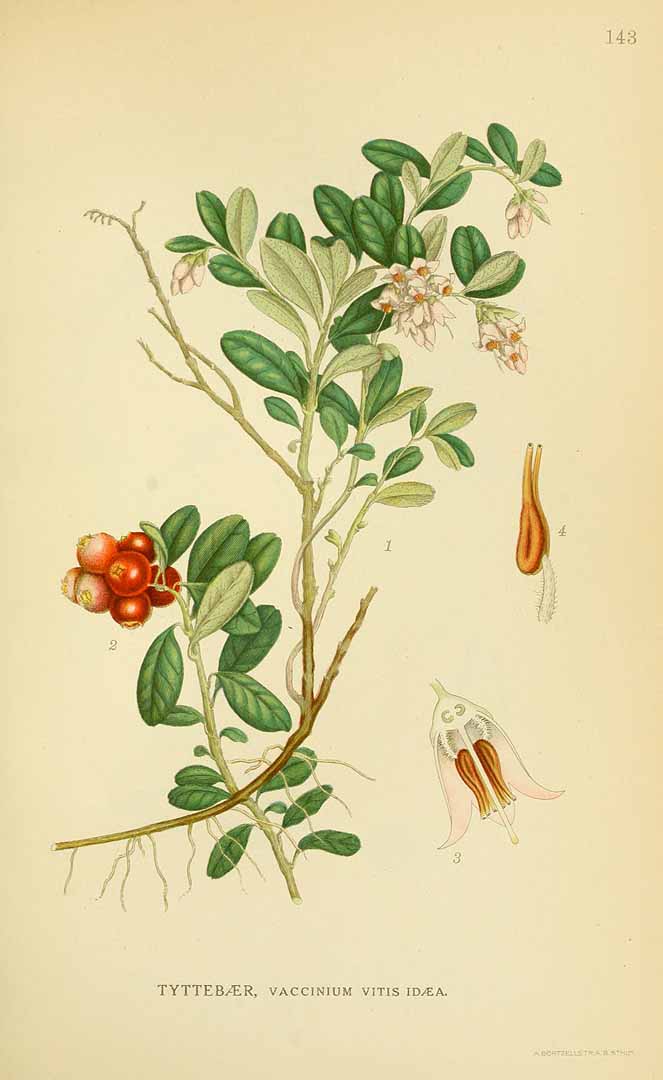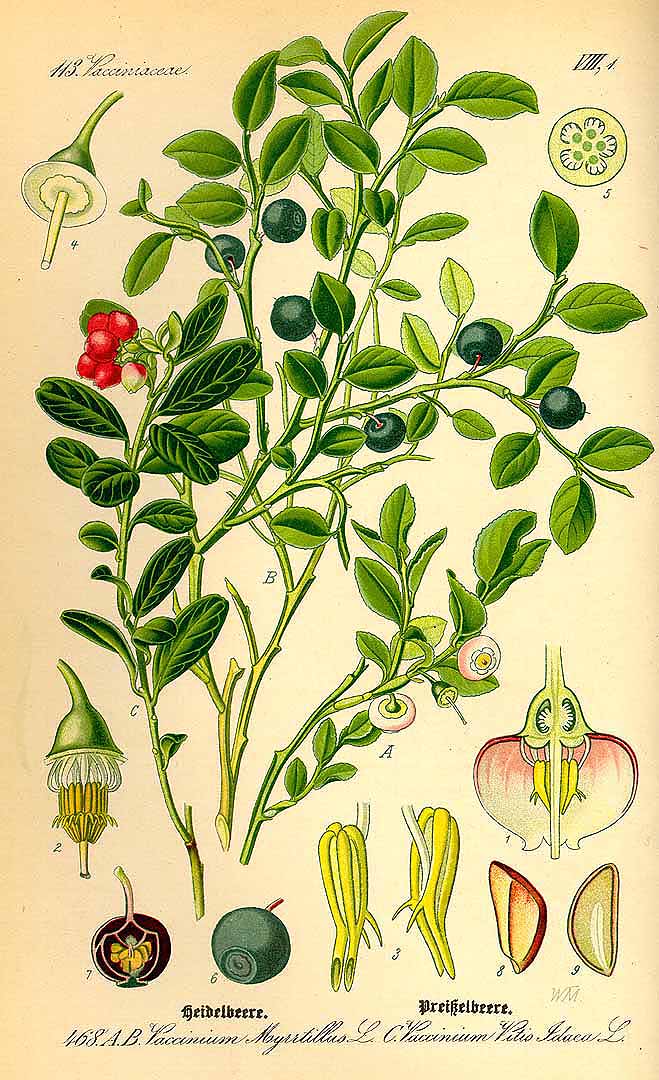! Nouveau site ici !
Vita > Plantae > Magnoliophyta > Magnoliopsida > Ericales >
Ericaceae > Vaccinium
Vaccinium vitis-idaea
(Airelle rouge)
![Illustration Vaccinium vitis-idaea, Par Oeder, G.C., Flora Danica (1761-1861) Fl. Dan. vol. 17 (1877-1883) [tt. 2881-3060] t. 2960, via plantillustrations](../inc/images/illustrations/vaccinium_vitis-idaea2.jpg )

 | *** - **
| *** - **
Vita > Plantae > Magnoliophyta > Magnoliopsida > Ericales >
Ericaceae > Vaccinium
Vaccinium vitis-idaea
(Airelle rouge)
![Illustration Vaccinium vitis-idaea, Par Oeder, G.C., Flora Danica (1761-1861) Fl. Dan. vol. 17 (1877-1883) [tt. 2881-3060] t. 2960, via plantillustrations](../inc/images/illustrations/vaccinium_vitis-idaea2.jpg )
Un arbuste bas à feuilles persistantes rampant. Il forme des nattes. Il atteint une hauteur de 15 cm et une largeur de 0,6 à 1,2 m. Les feuilles sont petites et ovales. Ils mesurent 5 à 20 mm de long et 5 mm... (traduction automatique)
→suite
⬀
Le  donne accès au menu
donne accès au menu (c'est votre point de repère) 😊 ;
En dessous vous avez la classification, à partir de la vie (Vita, premier rang) jusqu'à la classe au dessus de la plante, dont vous trouvez ensuite le nom scientifique/botanique (latin) puis le nom commun (français), le cas échéant ;
C'est aussi un lien vers la fiche complète (tout comme la ✖, en bas à droite, et le +, en dessous de la description) ;
Vient alors l'illustration (ou ce qui la remplace, en attendant), la comestibilité :
Et en bas
⬂


![Illustration Vaccinium vitis-idaea, Par Oeder, G.C., Flora Danica (1761-1861) Fl. Dan. vol. 17 (1877-1883) [tt. 2881-3060] t. 2960, via plantillustrations - Fermer Illustration Vaccinium vitis-idaea, Par Oeder, G.C., Flora Danica (1761-1861) Fl. Dan. vol. 17 (1877-1883) [tt. 2881-3060] t. 2960, via plantillustrations - Fermer](../../inc/images/illustrations/vaccinium_vitis-idaea2.jpg )
![Illustration Vaccinium vitis-idaea, Par Baxter, W., British phaenogamous botany (1834-1843) Brit. Phaen. Bot. vol. 5 [tt. 321-400] t. 383, via plantillustrations Illustration Vaccinium vitis-idaea, Par Baxter, W., British phaenogamous botany (1834-1843) Brit. Phaen. Bot. vol. 5 [tt. 321-400] t. 383, via plantillustrations](../inc/images/illustrations/vaccinium_vitis-idaea3.jpg )
![Illustration Vaccinium vitis-idaea, Par Baxter, W., British phaenogamous botany (1834-1843) Brit. Phaen. Bot. vol. 5 [tt. 321-400] t. 383, via plantillustrations - Fermer Illustration Vaccinium vitis-idaea, Par Baxter, W., British phaenogamous botany (1834-1843) Brit. Phaen. Bot. vol. 5 [tt. 321-400] t. 383, via plantillustrations - Fermer](../../inc/images/illustrations/vaccinium_vitis-idaea3.jpg )




